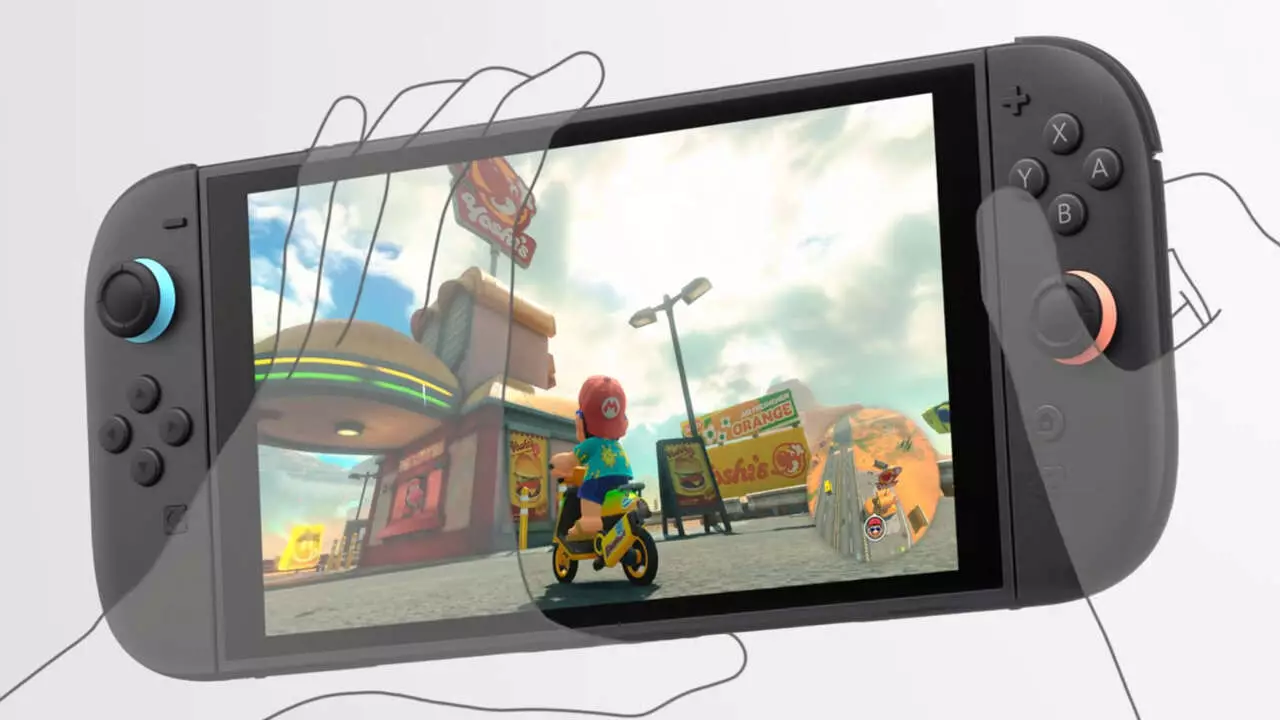The gaming landscape has been dramatically reshaped by innovative controller designs, and one of the most recognizable contributions is undoubtedly Nintendo’s Joy-Con controllers. As we anticipate the launch of the Switch 2 and its newly unveiled Joy-Con 2, it’s fascinating to delve into the history of this unique controller. Initially, the Joy-Con prototype envisioned the use of magnets for attachment, a feature that stood out as remarkably innovative. However, this magnet-based design was ultimately abandoned due to stability concerns, as highlighted by Kouichi Kawamoto in a recent interview.
Kawamoto recounts presenting the magnetic Joy-Con prototype to the late Nintendo President Satoru Iwata. Despite its ingenious concept, the team quickly realized that the wobbliness of the controllers caused by the weak magnetic connection posed a significant risk to user comfort. Iwata’s critical insights led to a pivotal decision: the traditional rail system was implemented to ensure a stable connection, eliminating any uncertainty in play. Nintendo’s commitment to user experience in gaming hardware is commendable, and it’s evident that the focus on stability was paramount in safeguarding the brand’s reputation.
Resilience and Innovation: The Relentless Pursuit of Improvement
While the magnetic idea may have been shelved, it didn’t signify an end to innovation; rather, it fueled a continuation of research. The spirit of perseverance embodied by Nintendo is inspiring. Tetsuya Sasaki, another crucial player in the Switch 2 development team, mentioned that despite discarding the initial prototype, the aspiration to create a magnetic attachment system lingered. This tenacity reflects a philosophy within Nintendo—never settling for mediocrity, and continuously striving to enhance user experience through iteration.
The result of this unwavering pursuit is the Magnetic Joy-Con 2, a controller that promises to make attaching and detaching a seamless experience. There’s something remarkable about creating a device that prioritizes accessibility, making it user-friendly enough for children while still being widely engaging for hardcore gamers. Nintendo has not just produced a product; they’ve crafted an experience that emphasizes simplicity and ease of use. This adaptability resonates well with an audience eager for technology that enhances pleasure rather than complicates it.
The Next Generation: What to Expect from Switch 2
The Switch 2 presents an impressive array of features that suggest a substantial leap forward from its predecessor. Enhancements like improved thumbsticks, a dedicated GameChat button, and capabilities to function like a mouse position the Joy-Con 2 at the forefront of controller evolution. Gone are the days when controllers were seen merely as inputs; with these new features, they become conduits for creativity and interaction.
In addition to the revamped controllers, the Switch 2 boasts technical upgrades that promise a richer visual experience. Features like HDR support, 4K resolution while docked, and exceptional frame rates ensure that both casual players and dedicated enthusiasts will experience games in stunning clarity and fluidity. Coupled with an exciting roster of exclusive titles—such as Mario Kart World and a sequel to Kirby Air Ride—Nintendo is clearly positioning the Switch 2 as an essential platform for the coming generation of gaming.
Nintendo’s Legacy of Connection: More Than Just a Console
Nintendo’s ability to create memorable gaming experiences goes beyond just hardware; it’s about building a community. The Switch 2’s lineup highlights this with beloved franchises, ensuring that gamers will feel a sense of nostalgia while simultaneously venturing into new, captivating narratives. The upcoming bundle offers a comprehensive immersion into the Nintendo universe, captivating both long-time fans and newcomers.
Moreover, it’s worthwhile to consider the cultural impact Nintendo has had on gaming as an industry. Their willingness to experiment and reinvent has often placed them a step ahead of the competition, as seen with the Walkthrough mode in The Legend of Zelda: Tears of the Kingdom and the innovative ways they have pushed the boundaries of how games are played. The launch of Switch 2, paired with revolutionary enhancements to the Joy-Con experience, reaffirms Nintendo’s commitment to being a trailblazer in the gaming world.
Through its ambitious drive for innovation and unwavering user focus, Nintendo not only anticipates the desires of gamers but actively shapes the future of gaming itself. The legacy of Iwata lives on in this quest for excellence, as Nintendo continues to inspire and engage through extraordinary interactive experiences. With each iteration, they invite us to imagine and experience gaming in ways we never thought possible.

